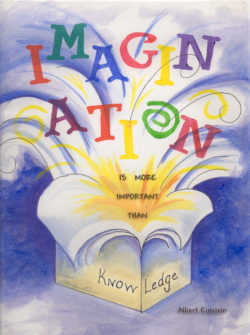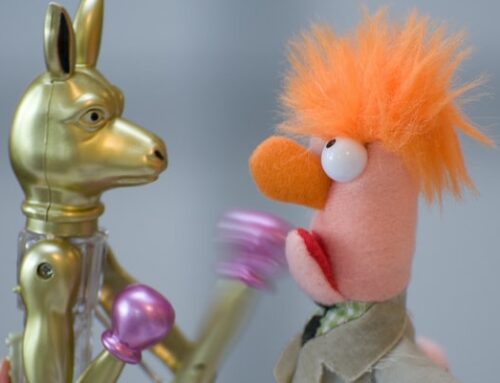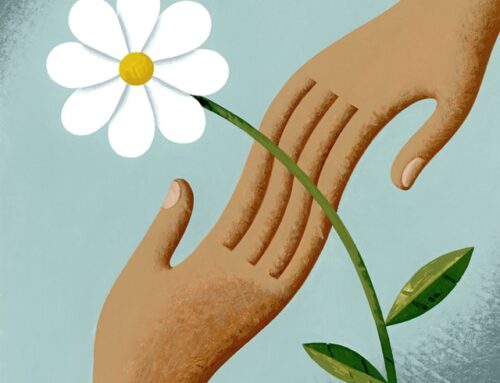 Imagination, fantasy, and play. Three concepts that naturally belong together. As children, they were a part of our lives in a very real way. As we get older, we tend to leave play behind to a large extent. Our society dictates that responsible adults focus more on the business of acquisition and achievement – very much ego activities. The engaging in play has a place but usually is socially sanctioned, such as playing sports or creating art that has some decorative value. Otherwise, play that has no other purpose than just to engage in play and fantasy has little valued place in our adult lives. In my opinion, we are poorer for it.
Imagination, fantasy, and play. Three concepts that naturally belong together. As children, they were a part of our lives in a very real way. As we get older, we tend to leave play behind to a large extent. Our society dictates that responsible adults focus more on the business of acquisition and achievement – very much ego activities. The engaging in play has a place but usually is socially sanctioned, such as playing sports or creating art that has some decorative value. Otherwise, play that has no other purpose than just to engage in play and fantasy has little valued place in our adult lives. In my opinion, we are poorer for it.
Many of Carl Jung’s fundamental ideas and concepts of his analytical psychology method came out of his own personal experiences with play as an adult. During a time of mid-life crisis after he broke away from Freud, he began to play daily as he had as a young boy as a way of trying to get in touch with the child he used to be. What he discovered is that engaging in play helped him work through some of his early experiences he had as a child. He found that play did not necessarily lead down the slope of memory to childishness, but rather led directly to the unfinished business of childhood. This was the beginning of Jung’s concept of active imagination that is such an integral part of his process of psychotherapy. What is active imagination? It is a turning attention and curiosity towards the inner world of the imagination and expressing that inner world symbolically, all the while seeking a self-reflective, psychological point of view. One way to do active imagination is to dialogue with figures in our dreams. The process of active imagination taps into the unconscious and can be done individually or in conjunction with an analyst. In either case, it is a method of healing as we get in touch with the images that are produced in the unconscious and engage with them.
The form of active imagination that I am most comfortable with and practice most often is engaging my dream figures in dialogue. Jung’s method of dream interpretation included this process of active imagination and Steven Aisenstat describes a form of this in his book Dream Tending. I recall a dream where I am in a business office setting as a new employee. My supervisor, an overweight woman dressed in black business attire, is neutral to me and yet when we go into a meeting that includes the entire staff, she becomes aggressive, mean, loud, and argumentative. The staff hates her. I feel dread at the thought of having to work for this woman. I did active imagination with my dream figure of the boss by engaging her in dialogue. By doing this, she transformed from the harassing supervisor to someone who was sad, isolated, and desperate to be loved and accepted by the people around her. When I asked the question of why she was so mean to everyone, she responded by saying that she had to act that way so people wouldn’t know how vulnerable she is and thus, they could not hurt her. We had a conversation, the result of which I no longer had the negative feelings toward her that I did earlier. She is a figure produced from my unconscious and thus, I believe, is a part of my own Self. By engaging in dialogue with this image, I actually am able to be in touch with a piece of my own unconscious.
Of course, active imagination need not only be done with dream images. Images can be auditory, visual, kinesthetic, sensory, etc. Working with any and all of these kinds of images is a way for us to engage with our unconscious in a way that can be healing. From a therapeutic standpoint, this is extremely beneficial, allowing patients space to explore difficult emotional connections in ways that they might not be able to access in a conventional therapy. In fact, it does not have to only allow space for difficult emotions but also for other unconscious contents that we might not otherwise have access to.
Play allows us access to these unconscious contents. It allows us to reconnect with our inner child and the healing powers of play and imagination. Playful adults are usually highly creative people. They have access to their unconscious through their playfulness and engage with the material that enters into their consciousness. I have many clients who have cut themselves off in a very real way from the playfulness and fantasy of their childhood. Many of them come into therapy complaining of depression, anxiety, and emptiness. It’s as if they have been cut off from a life source. Many of them have spent most of their time climbing corporate ladders, striving to increase their wealth and material goods, have married and have children. Yet they come into therapy wondering why they aren’t happy. When I ask them to play, pretend, draw, or move I am usually met with resistance. They want what they consider to be therapy: talk to the therapist and she should tell you how to change your life and then you are cured.
I understand this resistance to engaging in play as an adult. I experience it myself. I remember playing as a child but never with wild abandon. Playtime in my experience always had rules attached to it. I had to color within the lines, was never allowed to make a mess, and most of all I remember that play and fantasy was considered a waste of time by my parents. They were immigrants to Canada who had a strong work ethic and who had lived a hard life prior to coming to their new land. Play, daydreaming, fantasizing, doing anything that was not productive was met with great disdain and the threat of finding me something useful to do. I’ve grown into an adult who has difficulty slowing down, always has a long to do list, and has trouble just being when there is so much that I could be doing. Our society perpetuates this with its emphasis on accomplishment and acquisition. Intellectually I know that I should play more, lay out in my backyard and daydream, pursue creative outlets and I have a great desire to do so, however, something usually gets in the way of my doing so.
One of the things that gets in the way for me is my felt need to do things right. Perfection. A drawing I create needs to be a masterpiece or it’s worthless in my mind. A creative writing experiment needs to be worthy of being published or why bother. My inner critic is powerful indeed telling me that my attempts at play and creation are only okay if they are done perfectly. So the challenge is to leave our adult quest to measure up to some yardstick and just let go and play for play’s sake. Be curious, be open. Have a child’s mind and open yourself to the wonder that awaits you. You might just find that healing and personal growth are a side-effect!





Leave A Comment